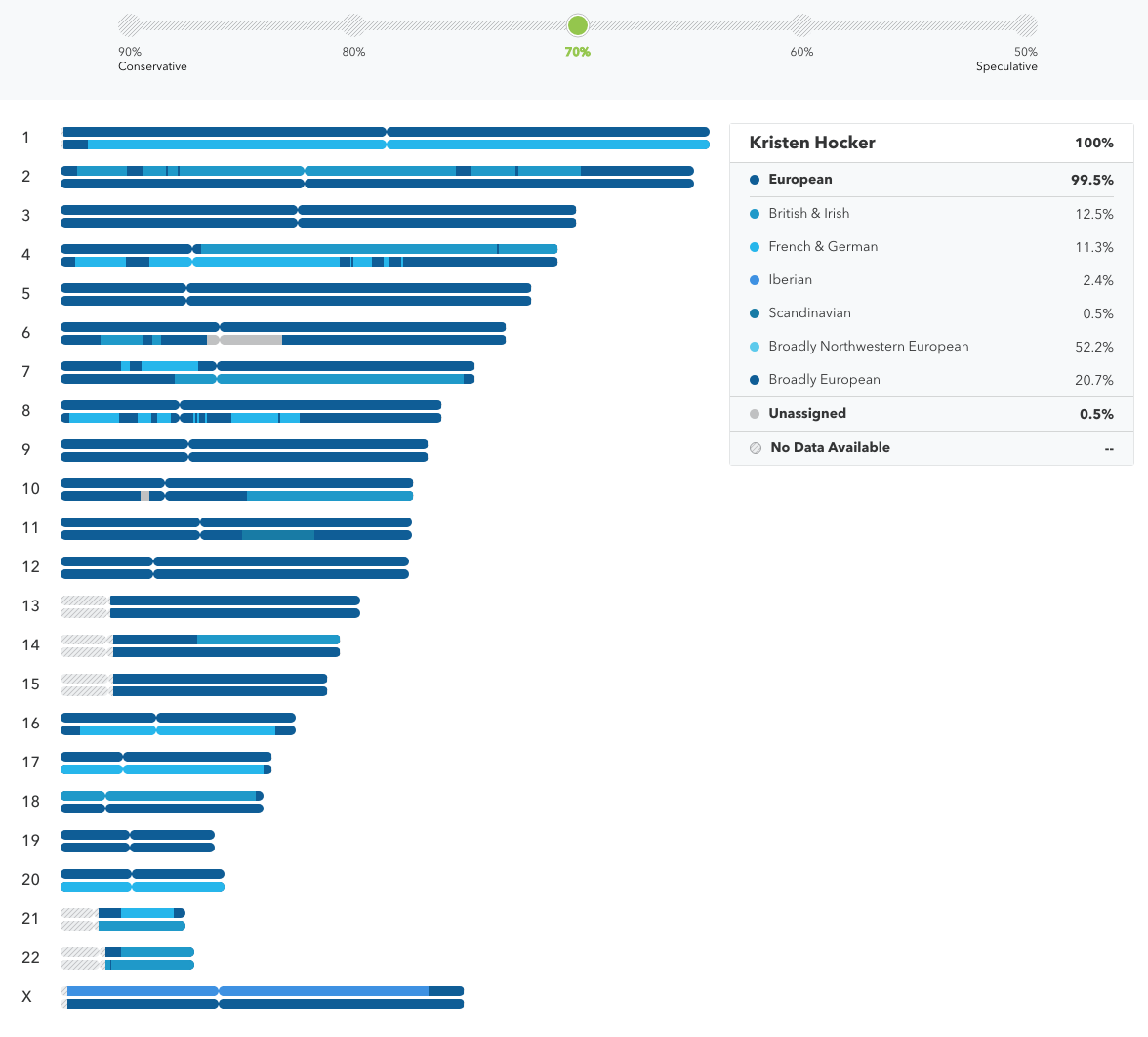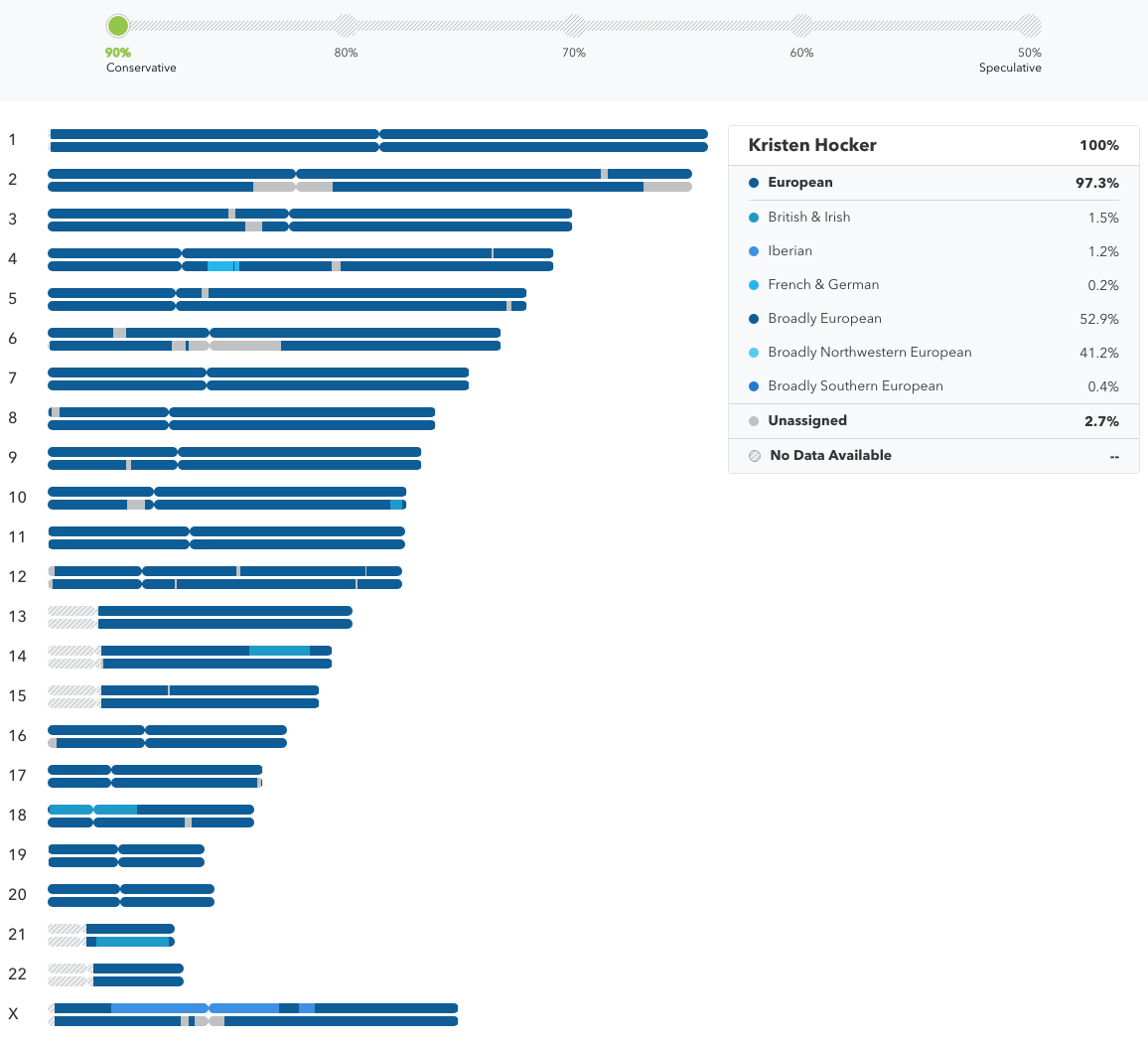Genetic Genealogy Update

The AncestryDNA growth trend doesn’t seem to be slowing down. As of the beginning of the end of April, Ancestry had nine million DNA testers in the database. If my match list is anything to go by that number is growing fast.

Autosomal Testing Growth, courtesy of The DNA Geek
In February I reported that I had 408 pages or 20,373 DNA matches. That number has gone up to 24,177 matches (484 pages). 409 were added in the last seven days alone, including another of my Dad’s cousins (YAY!). While the numbers at other vendors aren’t quite so large, the growth trend is consistent there, too.

DNA test match numbers
It’s both overwhelming and exciting. On the one hand, there’s just no way to keep up with the additions. Most of the cousins added are in the 5th-8th cousin range—a whopping 97%. The likelihood of finding a common ancestor there is small—especially when there are no family trees to compare. On the other hand, each new cousin who tests could be the one to help me break through to a whole new generation or surname to research. Having a research strategy is crucial.
By the way, if you’ve been thinking of testing, now is a great time to buy. All the vendors are celebrating Mother’s Day with a DNA sale. Here’s a list of vendors and sale prices.
Adding to the Mix
As I’ve mentioned, I uploaded my Ancestry raw DNA file to MyHeritage. They not only offer ethnicity results and relative matching, but also a chromosome browser—so you can see exactly where you and your relative match, triangulation—previously only available through 23 and me and GEDmatch, and the ability to download individual matches or all your matches.
23 and Me recently—for one day—allowed AncestryDNA testers to upload their results. In return, the user gets to see their ethnicity summary and the results to four of their health reports. To be honest, I’m not exceptionally interested in either, but I took it as an opportunity to see what the company has to offer.
The ethnicity composition at each was pretty consistent with what I know and what Ancestry and Family Tree DNA reported. MyHeritage reported that I’m European: 75.1% North & West European (France, Switzerland, Germany, Denmark, and parts of Italy, Austria, Czech Republic and Poland) and 24.9% Irish, Scottish and Welsh. 23 and Me reported that I’m 99% European with trace amounts from Western Asia & North Africa and East Asia & Native American. The latter percentages are so small that they likely represent ancient DNA.
Although the percentages vary, you can see that most of the results across the four testing companies are not that far off each other. The consensus is that I’m primarily of northwest European descent with a few ancestors from adjoining areas of Europe, as well.
What I found really interesting was 23 and me’s “Ancestry Composition Chromosome Painting.” This “predicts the ancestral origin of different parts of your DNA by comparing them to reference populations.” The granularity of sub-continent identification looks a bit different a varying confidence levels.
I’ve been mapping ancestors to DNA segments and painting my chromosomes using Genome Mate Pro and DNA painter. I wonder if I map this chart to the same chromosome map will it match what I know of those ancestors? What, if anything, might it tell me about the ancestry of some of those ancestors whose parentage has not yet been identified? For instance, who did I inherit the Iberian DNA from on my x-chromosome? What about that Eastern European on chromosome 6? Or the British & Irish I apparently inherited on both sides of chromosome 22?
Fascinating.
Clusters
I’ve been looking at clusters of Shared Matches lately on AncestryDNA, especially those who match my known Hocker relatives. I’ve been trying to find groups that may help me identify some of the unidentified ancestors of my great great grandmother Lillian Ainsley (Leedy) Hocker.
Sometimes in reviewing your matches you run into groups of cousins who all seem to appear in each other’s Shared Match lists. Without triangulation tools, it’s impossible to know whether the DNA you share all comes from the same common ancestor, but you can still use these Shared Matches to gain valuable insight.
If you recall, I used the matches I shared with several Snyder cousins to determine the maiden name of Henry Snyder’s mother Catharine is most likely Nuss. In researching the Shared Matches, I found I could trace a large number of them back to Conrad Nuss and Anna Margaretha Roeder. Further research into this couple revealed that not only did they have a daughter named Catharine of the correct age to be Henry’s mother, but the husbands of several of her sisters were named in the papertrail associated with Jacob and Catharine Snyder’s family.
I’m using this same technique to look at those individuals who match the descendants I’ve identified of Anthony Parsons and Catharine Bowerman. Catharine’s parentage is unproven—though I may have found candidates. I also have not proven the ancestry of Anthony’s mother. Like Catharine’s I’ve seen online family trees with family named, but, as is common, I have not seen evidence to support these identifications. Sorry, for me, other family trees do not count as evidence—clues, yes, evidence, no. So, I’m using the DNA matches to direct my research in the records. So far, it’s been minimally successful.
That’s the latest update on my genetic genealogy research. How’s yours going?
Cite This Page:
Kris Hocker, "Genetic Genealogy Update," A Pennsylvania Dutch Genealogy, the genealogy & family research site of Kris Hocker, modified 1 May 2018 (https://www.krishocker.com/genetic-genealogy-update-2/ : accessed 20 Apr 2025).
Content copyright © 2018 Kris Hocker. Please do not copy without prior permission, attribution, and link back to this page.




